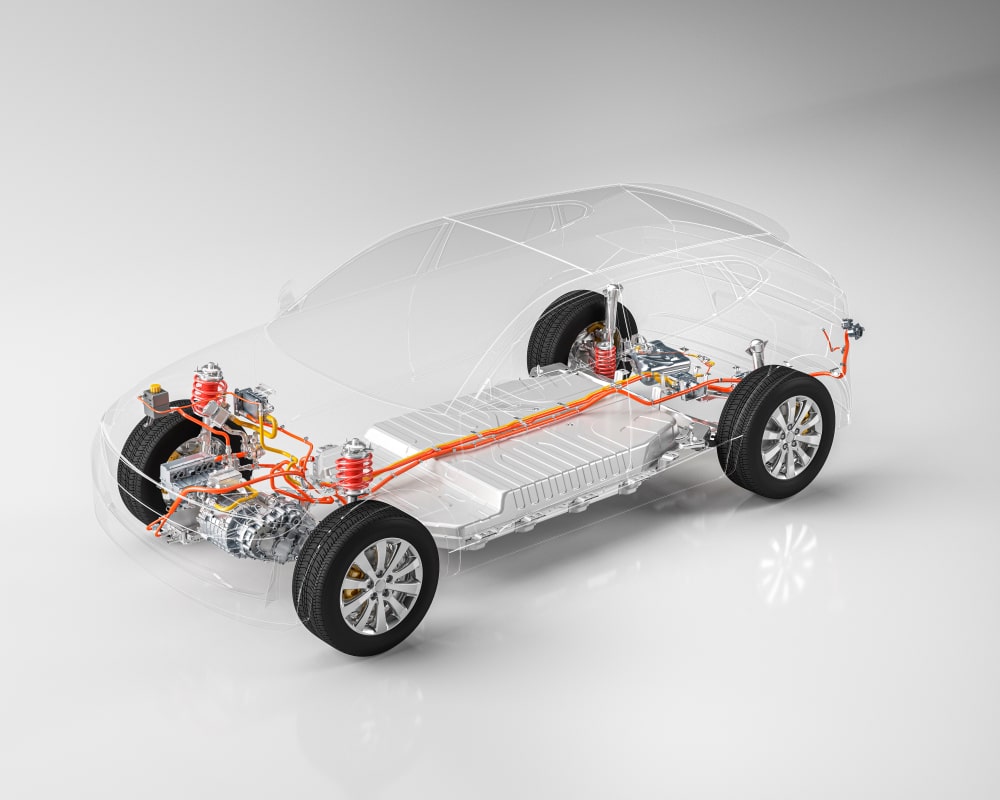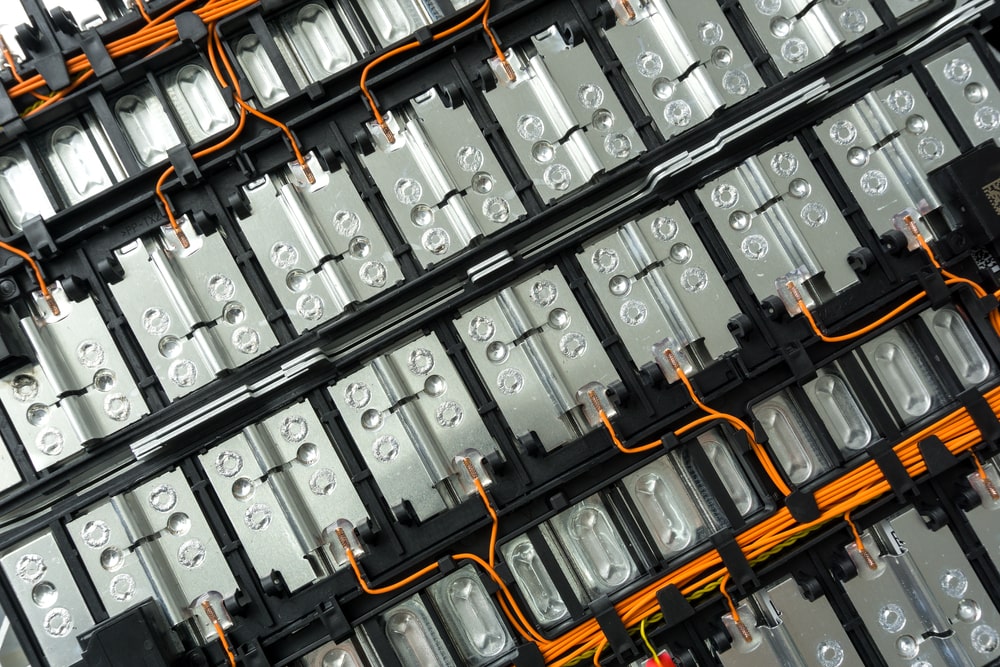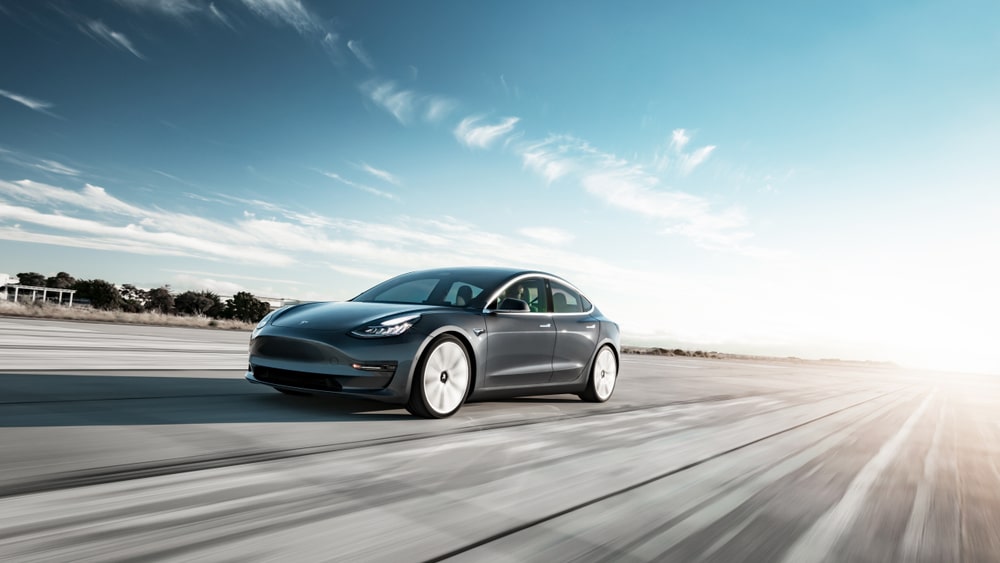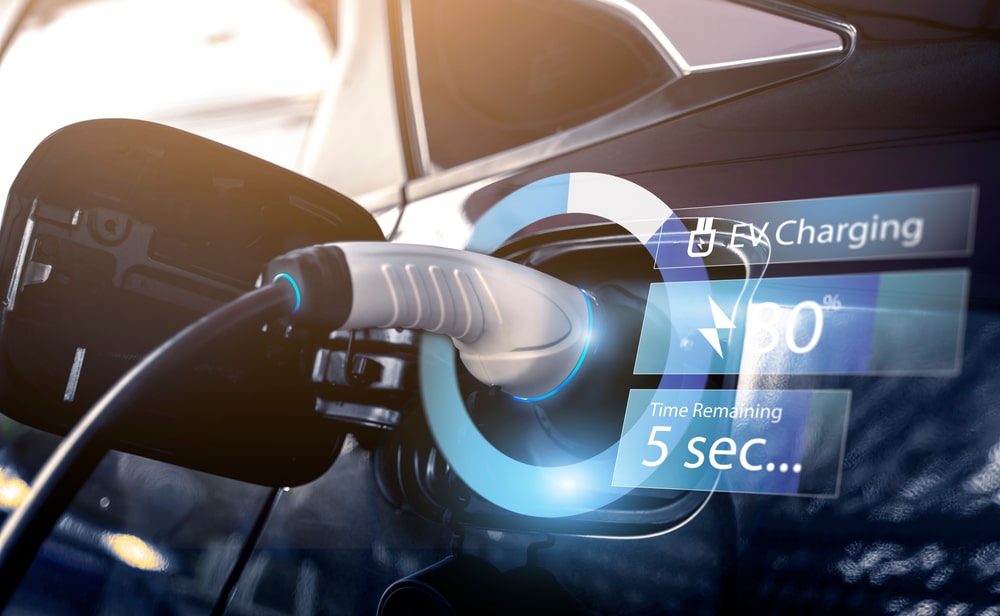
How much an electric vehicle (EV) battery weighs depends greatly on the vehicle and model. On average, however, EV batteries weigh around 454 kg (1,000 pounds), although some can weigh as much as 900 kg (2,000 pounds).
As a rule of thumb, the heavier an EV battery, the more energy it can store and the higher the power it can deliver. Although this relationship is not always straightforward. A larger battery can help increase range, at the same time, the added weight also requires more energy.
The growth of EV adoption
While electric cars were a novelty only a few years ago, the global EV market is rapidly maturing, with electric vehicles becoming the new norm. In 2022, electric vehicle sales exceeded 10.5 million, a 55% increase from the previous year.
One of the main differences new drivers experience when switching to EVs is having a battery instead of a fuel tank. Besides charging instead of refueling, a battery also impacts the handling of an EV, thanks to its comparably greater weight.
Let’s take a look below at how much electric car batteries weigh, what influences their weight, and how it affects driving and handling.
EV battery weight

An EV battery’s weight is determined by its size and energy storage capacity. Usually, the bigger the battery, the more energy it can store and the more it weighs. For example, 6 to 12 kilowatt-hour (kWh) batteries typically weigh between 100 and 150 kg, while 60 to 100-kWh batteries range from 350 to 600 kg. Of course, how heavy an EV battery is varies between cars and depends greatly on the car’s size and weight. Here are some examples of popular EV models’ battery weight:
As you can tell from the above, an EV battery’s weight is considerable and can make up as much as 25 percent of the overall vehicle’s weight. To understand where this weight comes from, we first need to consider what EV batteries are made up of.
What determines the weight of electric car batteries?
Despite looking like a single unit, EV batteries are actually made of thousands of smaller cells connected together to form a large battery pack. By far the most popular battery chemistry used for EVs is lithium-ion, thanks to its cost efficiency and high energy density, offering the most optimal trade-off between energy storage capacity and price.

So what actually makes up an EV battery’s weight? On average, about 60 to 75 percent of a battery’s total weight comes from the cells and the materials they contain, while the remaining 25 to 40 percent is made up of the battery’s metal casing, cables, and thermal and battery management systems (TMS and BMS).
Besides lithium, EV batteries also contain many other minerals, such as cobalt and manganese. A typical EV battery has about 8 kilograms of lithium, 14 kilograms of cobalt, and 20 kilograms of manganese, although this can often be much more depending on the battery size – a Tesla Model S’ battery, for example, contains around 62.6 kg (138 pounds) of lithium.
EV battery energy density
Energy density refers to the amount of energy a battery can store within a given weight. In other words, the higher the energy density, the more energy a battery can store while keeping the same weight.
EV batteries’ energy density is a crucial factor that determines how much power (and for how long) a battery can produce – and thus, how long an EV’s range is. High energy density is important to minimize the total weight of the battery while storing as much energy as possible to maximize the car’s range.
Compared to traditional lead-acid batteries with an energy density of around 50-100 Watt-hour per kg (Wh/kg), lithium-ion batteries have a typical energy density of about 260-270 Wh/kg. This makes lithium-ion batteries the preferred choice for any compact appliances that need a long battery life, such as phones, laptops, and, of course, EVs.

While lithium-ion batteries already have a high energy density, there is much research ongoing to improve the energy density of the existing lithium-ion batteries, with new battery structures and manufacturing processes expected to push energy density to around 350 Wh/kg, helping increase new EVs’ range while decreasing their weight.
What about the weight of a traditional car battery?
It might seem obvious when you think about it, but unlike gas cars, batteries in electric cars do much more than start ignition and power your lights. EV batteries are the primary source of power for electric vehicles and need to hold much more energy than a traditional combustion engine car’s battery would.
Because they hold much more energy, they are considerably bigger and heavier than conventional car batteries. That’s why a typical lead-acid car battery only weighs between 11 kg (25 pounds) and 22 kg (50 lbs), while EV batteries typically weigh hundreds of kilograms.
Are electric cars heavier than gas cars?

If there’s such a difference between EV and conventional car batteries, do EVs weigh more overall as well? The answer is usually yes; EVs tend to be heavier than combustion engine cars, largely because of their heavy battery.
That said, the difference isn’t as straightforward as you might think.
While EV batteries are heavier, their motors are much smaller and lighter than an internal combustion engine.
To further make up for the additional weight that the EV battery brings, EVs replace traditional components with lightweight materials. High-strength steel, magnesium alloys, aluminum alloys, carbon fiber and polymer composites can allow the gross weight to be reduced up to 50 percent and reduce the vehicle’s fuel consumption, making it more efficient.
Impact of electric car battery weight on driving specifications
Contrary to what you might think, a heavier battery can actually often improve driving specs, handling, and safety significantly. Besides their weight, this is due to EV batteries’ shape and placement: most commonly, EV battery packs are shaped into a long, flat, rectangular block typically placed under the floor of the cabin.
This helps bring the car’s center of gravity down, which, when combined with the added weight from the battery, makes it much more stable to drive. From a handling perspective, this means EVs can comfortably deal with tight curves even at higher speeds with little body roll and are much easier to drive in wet, icy, or snowy conditions.
Beyond handling, EVs’ weight also greatly improves passenger safety. Because of their low center of gravity, EVs are much less likely to roll over in an accident than gas cars, and the added weight can often help protect passengers in case of a crash by reducing the scale of the impact.
Advancements in EV battery technology

For newcomers to the EV world, it can often be surprising just how much EV batteries weigh, making up a significant share of the vehicle’s total weight. As the car’s main source of power, EV batteries are a critical component for electric vehicles, and their weight is directly proportional to how much power (and thus, range) is needed to power a car.
That said, advances in EV battery technology are improving energy density, allowing carmakers to achieve longer ranges from the same sized battery, and new materials are making EV batteries lighter – and, as such, more energy efficient.
Related articles

Smart Charging for Solar EV Systems: What is possible today?
There are a variety of smart solutions available, capable of optimizing your solar EV charging system in different...

Can solar EV charging save you money?
Charging your EV using household solar panels can indeed save you money on your utility bills. How much money solar EV...

How to optimize your solar set-up for charging electric cars at home
There are several ways EV drivers can optimize a homegrown solar system to ensure their EV recharging needs are met....